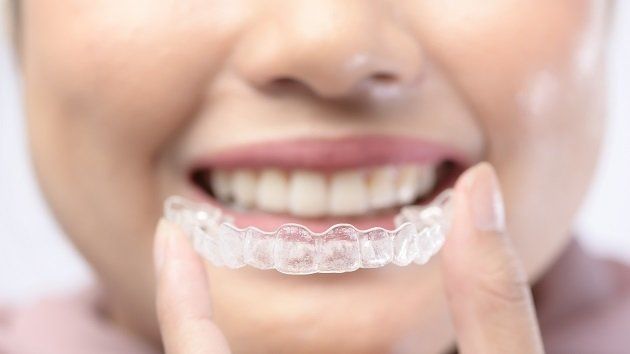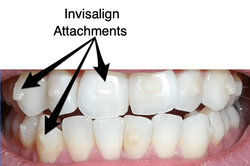Invisalign for Teenagers: A Modern Solution to Straightening Young Smiles
Invisalign for Teenagers: A Modern Solution to Straightening Young Smiles
Blog Article
Invisalign vs. Conventional Dental braces: Which Option Is Right for You?
When thinking about orthodontic treatment, the option between Invisalign and typical dental braces offers a number of vital factors that merit cautious examination. Invisalign provides a very discreet option with removable aligners, while traditional dental braces provide a more noticeable yet effective remedy for severe imbalance. Each choice incorporates unique benefits and downsides connected to appearances, comfort, treatment duration, and cost. Understanding these subtleties is essential for making an educated choice that aligns with your individual choices and lifestyle. The question remains: which choice will best meet your orthodontic needs and assumptions?
Overview of Treatment Alternatives

In contrast, conventional dental braces include metal braces and cables that are adhered to the teeth. This approach uses continuous pressure gradually to attain positioning. While effective for complicated orthodontic concerns, typical braces need regular check outs for modifications and can posture challenges in maintaining oral health as a result of the problem of cleansing about brackets and cords.
Both choices have their advantages, and the selection commonly depends upon certain dental problems, way of living choices, and person compliance. Ultimately, consulting an orthodontic professional is vital for figuring out one of the most appropriate therapy strategy customized to individual demands. Recognizing the nuances of each choice can substantially affect the total success of orthodontic treatment.
Visual Factors To Consider
A substantial aspect influencing the choice between Invisalign and traditional dental braces is the visual charm each treatment offers. Invisalign aligners are crafted from clear plastic, making them practically unnoticeable when put on.
In contrast, traditional dental braces contain metal brackets and cables, which can be a lot more visible. While improvements in orthodontic innovation have actually led to the development of smaller sized braces and colored elastics, standard braces still preserve a more conspicuous account. For some individuals, the visibility of dental braces may discourage them from looking for essential therapy.
Eventually, the option in between Invisalign and typical dental braces may rest on personal preferences regarding looks. Individuals who prioritize discernment often lean towards Invisalign, while those that are less concerned regarding presence may choose for typical braces. Comprehending the visual effects of each option is vital for making an educated decision that aligns with one's way of life and choices.
Convenience and Convenience

In regards to comfort, Invisalign aligners are removable, enabling patients to appreciate their preferred foods without restriction and keep optimum oral hygiene. Cleaning and flossing are simplified, as the aligners can be taken out throughout these routines, whereas traditional dental braces need careful steering around braces and wires.
In comparison, traditional dental braces demand routine adjustments, making them less practical for those with busy timetables. On the whole, the comfort and ease of Invisalign make it an enticing choice for several individuals looking for orthodontic treatment.
Treatment Period and Effectiveness
While both Invisalign and traditional dental braces are effective in correcting dental imbalances, the period of treatment can vary dramatically in between the 2 choices. Generally, Invisalign treatment can take anywhere from 12 to 18 months, depending upon the intricacy of the instance. The clear aligners function by progressively changing teeth right into their preferred placements, and regular follow-ups with an orthodontist aid guarantee development remains on the right track.
On the other hand, standard dental braces frequently require a longer commitment, normally ranging from 18 months to three years. This is due to their fixed nature and making use of cables and brackets, which can be extra reliable for complex cases and extreme imbalances (Invisalign). The treatment efficiency of conventional dental braces is well-documented, as they enable specific adjustments and better control over tooth motion
Ultimately, the selection between Invisalign and conventional braces might hinge on both the awaited treatment period and the details dental problems available. Consulting with an orthodontist is critical, as they can provide tailored suggestions based on individual needs, making sure the selected technique lines up with wanted results and durations.
Cost Contrast and Insurance Choices
Expense plays a considerable duty in the decision-making procedure for individuals taking into consideration orthodontic treatment, whether going with Invisalign or conventional braces. Generally, the expense of find more Invisalign arrays from $3,000 to $8,000, while traditional braces usually set you back between $2,000 and $6,000. Elements influencing these expenses consist of the complexity of the situation, the period of therapy, and geographical area.
Insurance insurance coverage can considerably impact out-of-pocket costs. Many oral insurance strategies give partial protection for orthodontic therapies, however the specifics can vary commonly. It is vital for clients to evaluate their insurance plan to identify the degree of protection for either choice. Typically, standard dental braces may be more regularly covered by insurance plans contrasted to Invisalign, which some insurance companies classify as a cosmetic treatment.
In addition, numerous orthodontic practices supply adaptable layaway plan, making Discover More both treatment options a lot more available. Clients ought to ask about possible financing options and price cuts for ahead of time repayments. Examining the total cost, consisting of insurance coverage benefits and layaway plan, is essential for making a notified decision that straightens with both visual preferences and budget factors to consider.

Conclusion
In recap, the choice between Invisalign and conventional braces depends upon multiple elements, consisting of visual choices, comfort, therapy duration, and cost. Invisalign provides a discreet, detachable choice that promotes oral health and dietary versatility, while traditional braces might be much more ideal for intricate oral concerns and frequently come with a reduced cost factor. Inevitably, examination with an orthodontist is vital to examine individual situations and determine one of the most suitable treatment alternative for attaining optimal dental placement.
When thinking about orthodontic treatment, the selection between Invisalign and traditional dental braces presents several vital variables that warrant careful analysis.Contrasting Invisalign and standard dental braces exposes distinct therapy options for orthodontic modification.While both Invisalign and conventional dental braces are effective in dealing with dental imbalances, the duration of treatment can differ substantially in between the 2 options.Expense plays a significant function in the decision-making process for individuals taking into consideration orthodontic treatment, whether deciding for Invisalign or traditional dental braces.In summary, the choice between Invisalign and standard braces hinges on multiple factors, consisting of visual preferences, convenience, therapy period, and cost.
Report this page